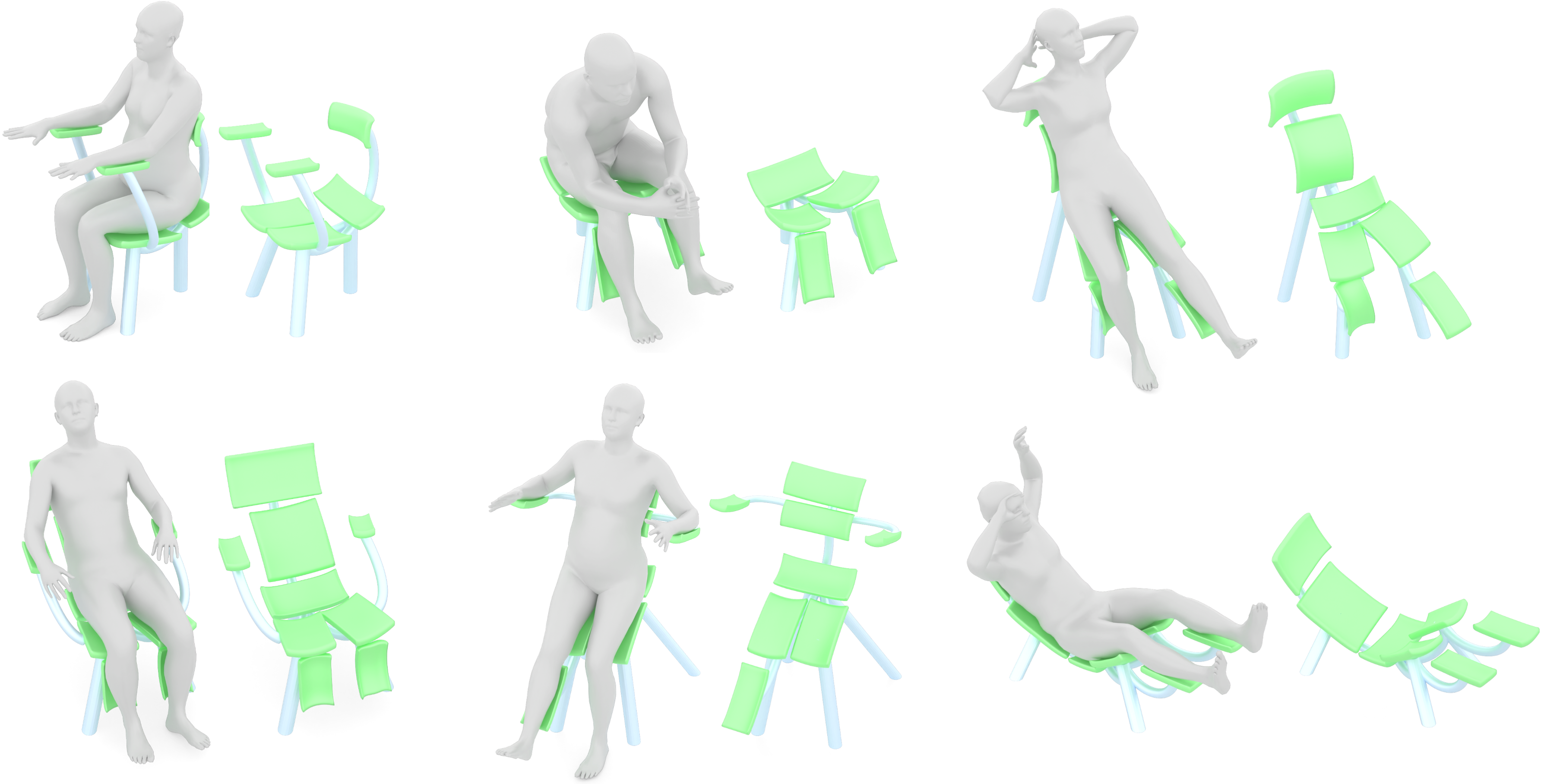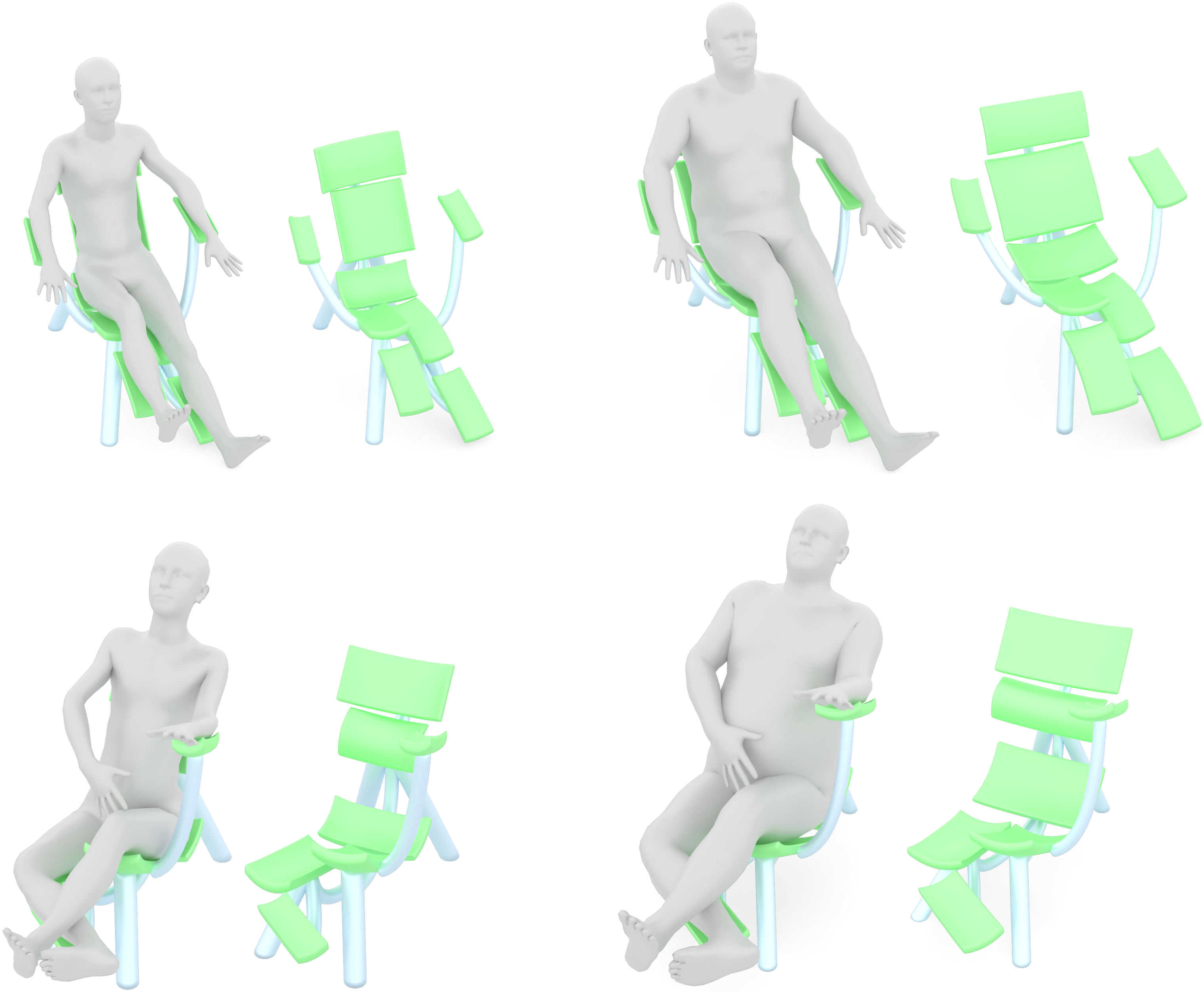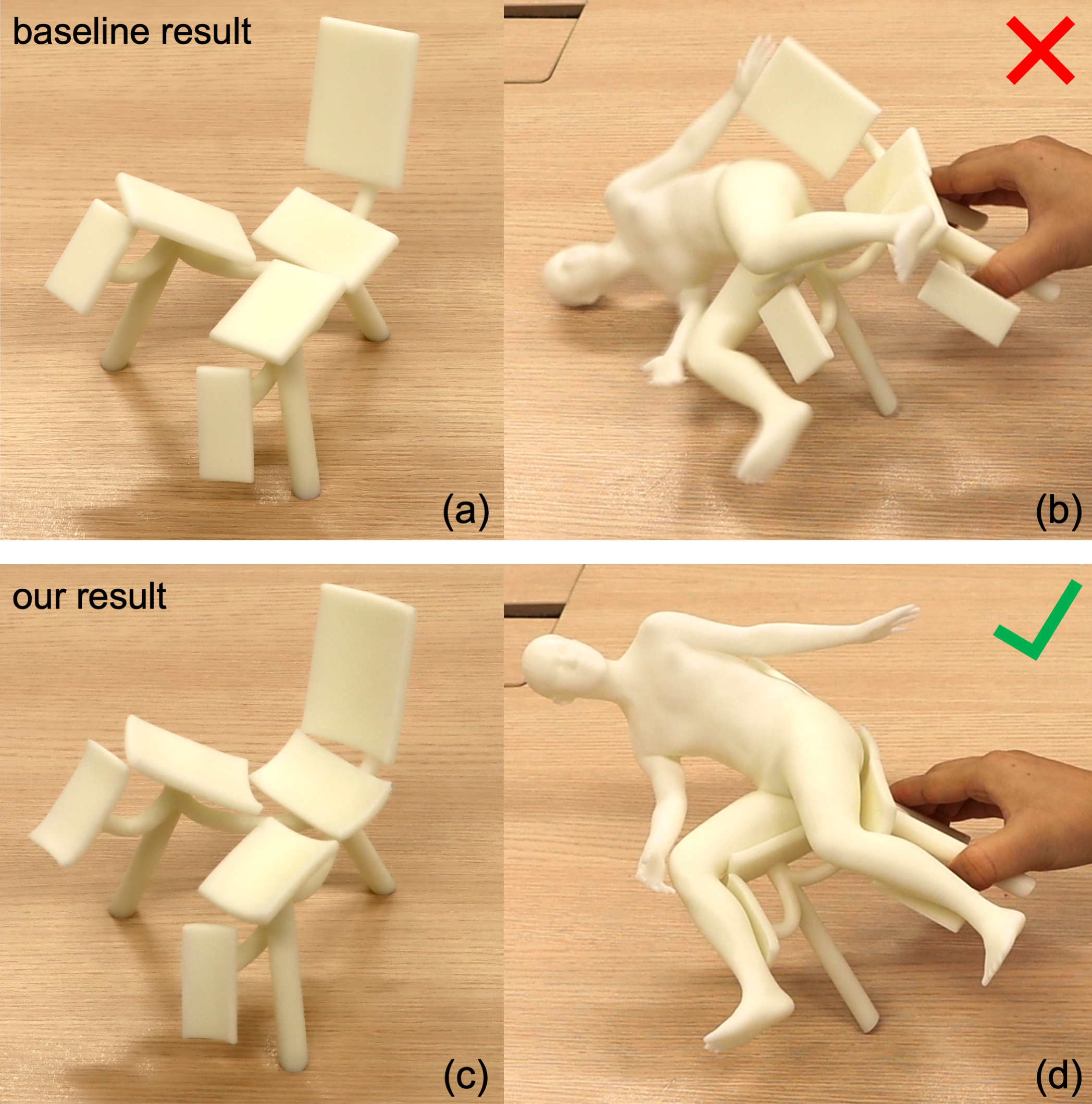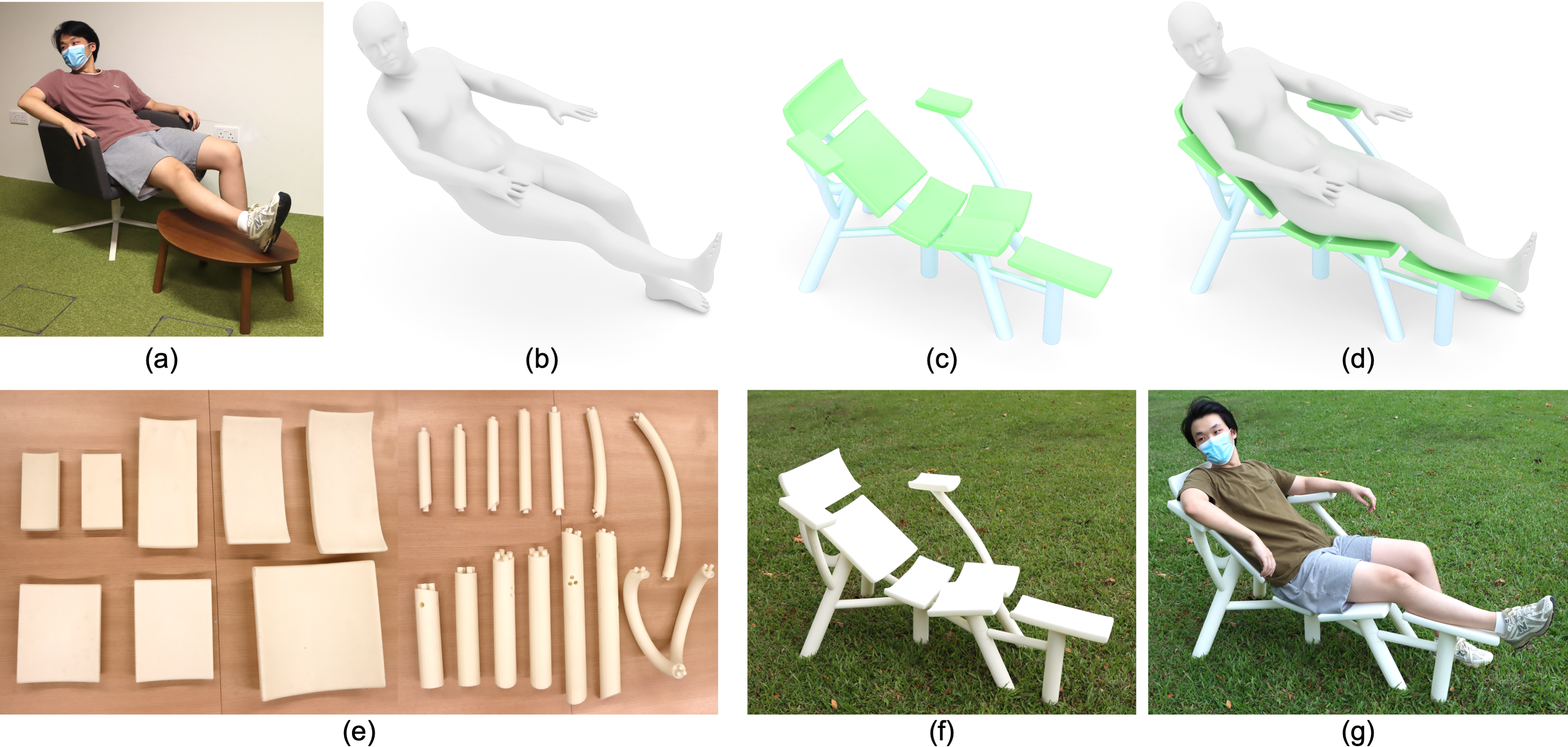Computational Design of Body-Supporting AssembliesPacific Graphics 2025, Journal Paper (* joint 1st authors) |

Figure 1: Taking (a) a human body in a specific posture as input, we present a computational approach to designing (b) a body-supporting assembly that (c) fits the body posture to make the assembly comfortable to use. We validate the usability of our designed body-supporting assembly by conducting (d) an informal user study with a 3D-printed full-scale prototype.
Abstract
A body-supporting assembly is an assembly of parts that physically supports a human body during activities like sitting, lying, or leaning. A body-supporting assembly has a complex global shape to support a specific human body posture, yet each component part has a relatively simple geometry to facilitate fabrication, storage, and maintenance. In this paper, we aim to model and design a personalized body-supporting assembly that fits a given human body posture, aiming to make the assembly comfortable to use. We choose to model a body-supporting assembly from scratch to offer high flexibility for fitting a given body posture, which however makes it challenging to determine the assembly's topology and geometry. To address this problem, we classify parts in the assembly into two categories according the functionality: supporting parts for fitting different portions of the body and connecting parts for connecting all the supporting parts to form a stable structure. We also propose a geometric representation of supporting parts such that they can have a variety of shapes controlled by a few parameters. Given a body posture as input, we present a computational approach for designing a body-supporting assembly that fits the posture, in which the supporting parts are initialized and optimized to minimize a discomfort measure and then the connecting parts are generated using a procedural approach. We demonstrate the effectiveness of our approach by designing body-supporting assemblies that accommodate to a variety of body postures and 3D printing two of them for physical validation.
Download
Paper PDF (~33.3M)Source Code
Video
Results

Figure 2:
Our approach allows designing body-supporting assemblies that fit a variety of body postures. For each result, we show the body-supporting assembly with and without the input body posture.

Figure 3:
Our approach allows designing body-supporting assemblies that adapt to different body shapes in the same posture: (left) slim and (right) broad body shapes.

Figure 4:
We conducted a tilt analysis on (top) a baseline assembly and (bottom) our assembly, and showed that our assembly has a better performance in terms of preventing unintentional sliding of the human body.

Figure 5: Taking (a) a photo of a user in a preferred seating posture, (b) we reconstructed the user's body model and took it as the input of our design tool. (c&d) We designed a body-supporting assembly that fits the body posture using our tool, fabricated (e) the parts using 3D printing, and assembled them to form (f) a body-supporting assembly. (g) The user sits on the assembly to evaluate its usability.
Acknowledgments
We thank the reviewers for their valuable comments, Haoyu Tang for participating in the user study, Pengyun Qiu and Yuhang Wang for preliminary work when the project started. This work was supported by the Singapore MOE AcRF Tier 2 Grants (MOET2EP20222-0008, MOE-T2EP20123-0016).
Bibtex
@article {He-2025-Body2Assembly,author = {Yixuan He and Rulin Chen and Bailin Deng and and Peng Song},
title = {Computational Design of Body-Supporting Assemblies},
journal = {Computer Graphics Forum (Pacific Graphics)},
volume = {44},
number = {7},
year = {2025}}